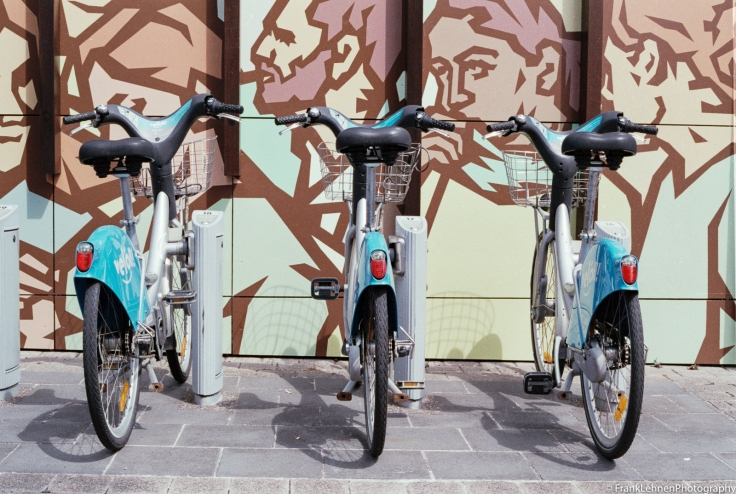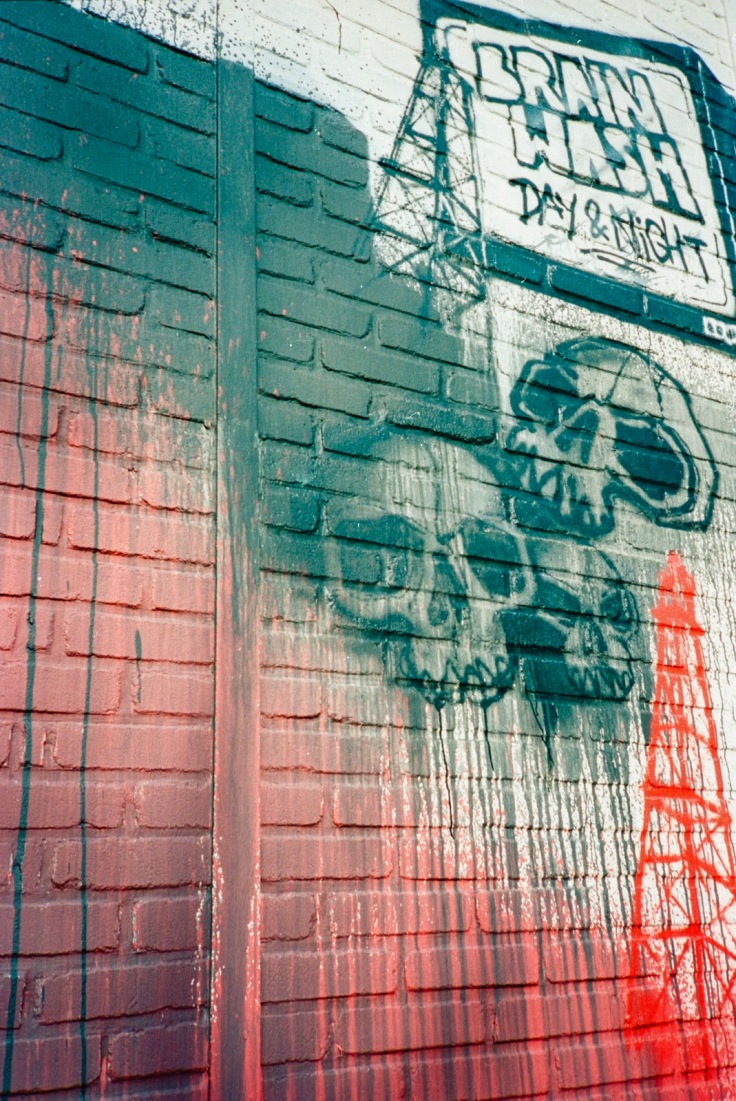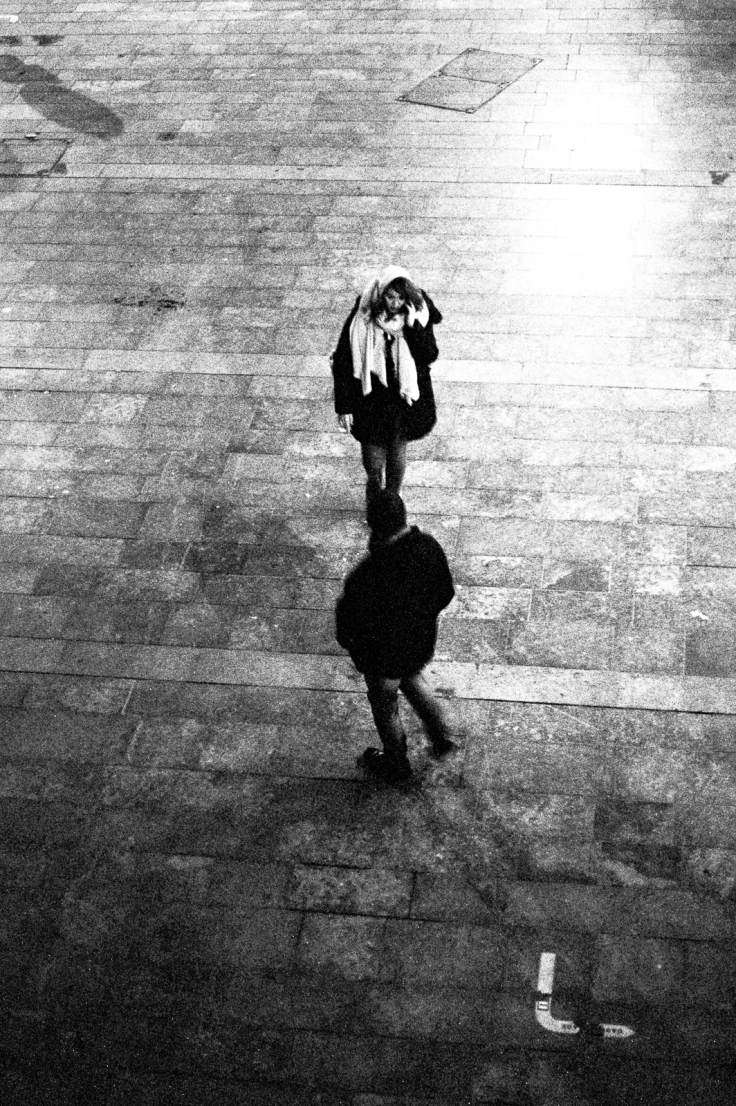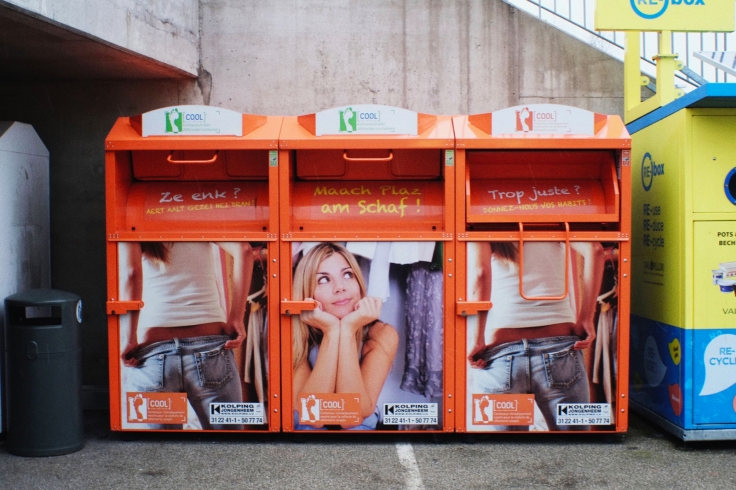…and no, this is not about the use of these two film types. This is rather about how I process the negatives. More precisely about the difference of said processing.
As you might know, despite a nice and promising test with bathroom-turned-darkroom-printing some months back, time and space force me to rely on scanning my negatives. I would have loved to push with wet printing on and refine my technique (or try to even work out a technique in a first time) but it is simply not doable.

So it was back to scanning. A little less time consuming as darkroom work and much easier on the other people of my household who can use the bathroom as needed.
And while I have been scanning my negatives for some years now, I have noticed some pattern that evolved in how I handle color negatives and black and white ones.
But let me go back some two years to the moment I chose my favorite scanning software.
I had been using Vuescan with some success in the previous years and had always scorned Silverfast.
with some success in the previous years and had always scorned Silverfast.
That ugly, complicated user interface, extremely overloaded with all those options, menus, buttons and sliders. A digital nightmare! A piece of software that, to me, seemed to be programmed by a drunk teenager.
I certainly read some positive reviews about it but there were a lot more scathing ones.
But then I tried some color film and Vuescan simply did not cut it. It was very hard to achieve decent results with even approximately coherent color rendering. Despairing, I dug out my Silverfast licence again and started experimenting…. and I found out something!

If you just let all the settings in Silverfast be, just ignore them, and only set the scanning resolution and the correct film type in NegaFix, you’re doing something right. The resulting scans are looking good and correspond to the look of the film stock you used!
Bingo!
So here you have my workflow for color film:
@ Scan with Silverfast
@ Import to Apple Photos and do some cleaning up. There’s always some dust on the negatives, no matter how careful you are
@ No further adjustments…. unless I got the exposure wrong or skewed the horizon once again
And hey presto! Finished!

The results look good (to me at least) and just call for a minimum of work. Irreversible Photography some might call it! Or at least my film version of it. The resulting scans are quite true to the nature of the film type I used. And that’s what I want for color photography.

Black and White film on the other hand is, for me, a much more personal affair. With monochrome film I don’t try to render the inherent contrast or grey balance of the film stock I used. Be it HP5, my favourite or Tri-X or even Fomapan, it makes no real difference to me. I always try to achieve quite high contrast results. Somewhat on the dark side you might say.
Of course I am picks as to my films. As I said I like HP5 a lot, and the results in Rodinal are real grainy delights! But some times I prefer less grain, so I use T-max 100 or 400. Or I might go on one of my ever popular early morning photo hunts…

…and I might need a higher ISO. T-max P3200 to the rescue! Thanks, Kodak!
As you can see, with black and white I don’t select my film stock according to the film’s look. I am editing my scans too much to retain the specific film’s proper aspect.
Sorry if I offend the purists here but that’s just the way I like my black and white film. Purely a personal decision!

So what does my monochrome workflow look like?
@ Scan with Silverfast with a basic setting giving a nice flat scan containing all the information I need to process.
@ Import to Apple Photos and here is where the fun starts!
@ I hunt for dust, straighten the photo (I seem to have a problem with the horizon) but I usually don’t crop.
@ I edit the scans with Luminar or Picktorial from inside Photos and I use the very powerful tools to get the look I want. I adjust the blacks and whites, highlights and shadows, the contrast and exposure. Then I add a pinch of clarity or some such and fiddle with the settings until I am happy.
@ Sometimes I cheat and use presets… 😔
Much more involved and time consuming if you ask me (but who does ask me?).
Now one thing is cerainly true: This look I like, which is quite uniform, could be achieved easier by using a digital camera with the right settings and a good jpeg output…. True! Works even for my iPhone photos!

I could even add some artificial grain to get that film look! Yes, I know, it’s sacrilege to even think such stuff and here I go and write it for everyone to read.

Get those torches and pitchforks! I’m wait for you!

But I’m not ready for that… perhaps one day I’ll find a digital camera that ticks all my boxes. The possibilities are there. An I’m not afraid to do fake film, hehe.
So where does that leave me?
With a simple, straightforward color film workflow and a rather more complicated monochrome one!
The striking thing is that I instinctively treat those different film types in completely opposite ways. I did not make a conscious decision to go either way with colour of black and white but it has evolved this way over the years.
Color film scans must, in y opinion, retain the essence of the film stock used and monochrome film scans must comply to my artistic preferences…
Bizarre?
What do you think about this? I’ll be happy to read your comments. And remember to tick the “Notify me of new comments via email” box to follow the conversation.
Thanks for stopping by!
Hello Frank, I use NikonScan on the Nikon scanner, with just digital ICE set at normal, no other adjustments for colour negs, for Black & White I scan in positive mode, 8 bit greyscale, no other adjustments, then invert the image in whatever editing program I’m using, followed by autolevels, sharpening and contrast adjustments.
LikeLiked by 1 person
Ah, I had a Nikon Coolscan IV some time ago. Foolishly sold it in a bout of ‘I’ll go digital now’ sillyness. Bitterly regret that scanner now.
So you have different approaches for color and b&w too. Seems like a good thing then!
LikeLiked by 1 person
I found this really good article that got my black & white scanning sorted http://oomz.net/bw_workflow/ It’s based on EpsonScan software but the basics are the same for most types of scanner software.
LikeLiked by 1 person
Thanks
LikeLiked by 1 person
I got a CanoScan 9000 Mk II last year that I’ve yet to fully set up — haven’t had time. But on my old Epson V300 I used SilverFast and was sort of like you: for color film I stuck to that film’s profile, but for b/w I shopped profiles for each roll until I found one that gave me a look I liked.
LikeLiked by 1 person
The Canoscan is a fine scanner but in my opinion resolution, the real one, not the advertised one is too low.
I like the results of my Plustek 8100
LikeLiked by 1 person
Here’s an interesting one for you Frank. Have you ever used chromogenic black and white film? If so did you treat as black and white or colour? Just curious as I have much scanning to do colour, chromogenic and conventional. One day I’ll get around to it. Not been too bad since my return to film as I normally get films put on to CD as I use commercial processing currently.
LikeLiked by 1 person
Never used chromogenic b&w… sorry
LikeLike
Reading about your processing of black and white film Frank, it does seem ironic that you spend a fraction of a second making the exposure, then hours developing it by digital means afterwards… Just sayin’ 😀
LikeLiked by 1 person
Awww yes…. not very logical isn’t it? Though it does not take hours once the film is scanned. Developing about 30 minutes, scanning another 35 to 40.
Processing is quite fast. Not even a minute or two per acceptable frame.
Slower than digital though…. true.
Don’t make me think there!
LikeLike
Just playing Devil’s Advocate a bit, and it’s all down to semantics I guess, but very few people are actually shooting film in the completely “old fashioned” way – shooting, developing and printing themselves in a purely physical way, with no digital aspect.
I know using film cameras has its appeal, and that can’t be quite matched by a digital.
But beyond that it is much the same, especially when the final images are scanned and become digital files you could just have uploaded from an SD card. : )
LikeLiked by 1 person
Hmm, the day might come when I go digital…. The main thing holding me back (firmly) is the cameras. Never came to like or trust a digital camera like a film camera….
LikeLike
So a film body with a digital back might be the ultimate for you?
LikeLiked by 1 person
Not sure…. either might do, not both
LikeLike
…. a Leica M9 might fit the bill. Oh, not the bill obviously. It would just be a film like camera with digital sensor. But still ‘a bit’ too expensive, even considering it’s age.
LikeLike
I’ve never been that bothered with Leicas, but in fact a digital one has far more appeal than a film one. But way beyond my budget!
LikeLiked by 1 person
I do think if you like the Ricoh R/GR film cameras, you’d like the digitals.
LikeLiked by 1 person
Aaaah, but they scare me. That bad experience with the GR1 and those bad reports online
LikeLike
I think the film cameras are now best avoided given their age. But a later GRD II or IV are still only about 5-7 years old. The GR APS-C even newer.
LikeLiked by 1 person
Who knows…. you’re selling one of yours? 😉
LikeLike
Ha, not yet! I could possibly see me selling the GX100 at some point. I still don’t love zooms, even if I only use one focal length, it’s seems unnecessarily complicated to have the other options there. And the GX100 is much slower in use. Fine when you’re used to it and not using anything else, but writing is sluggish compared to the GRD III. The Pentax Q and Ricoh GRD III are my current kings. I would like to try a GR one day, but they’re still not quite yet affordable enough, and in reality the GRD III is so good I can’t see I would gain anything from the GR version.
LikeLiked by 2 people
I think that there are multiple factors at play here.
Black and white photography is always an interpretation of reality. So there is less resistance against creating another one. You are also more familiar with editing in black and white.
Color photography is closer to reality and there is more physiological pressure to keep it like it is.
But it does not have to be like this. I do not mean creating some crazy überreality. It can be very artistic. Have a look here http://www.lookslikefilm.com/blog/?category=Before+and+After
I think that most of these are fairly tasteful edits.
So I think that there is nothing wrong with your black and white work flow. You are more confident in it and it allows you more creativity. Of course you could try to edit in the camera with the film choice and exposure and after that developing but of much choice does it give really?
And perhaps in time you also become more confident in color editing.
LikeLiked by 1 person